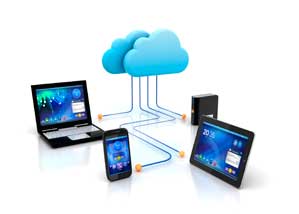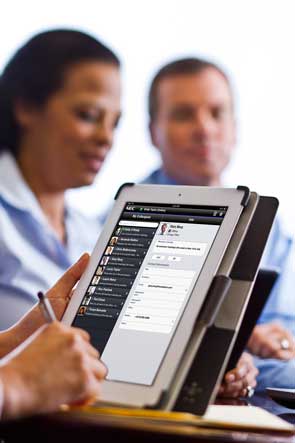 Improving your Return on Investment can be a tough task, but Unified Communications and Collaboration (UC&C) makes successful performance that much easier, since existing technologies can be merged with new technologies to connect people and companies at volumes and speeds never seen before.
Improving your Return on Investment can be a tough task, but Unified Communications and Collaboration (UC&C) makes successful performance that much easier, since existing technologies can be merged with new technologies to connect people and companies at volumes and speeds never seen before.
CIOs are under constant pressure to drive their organizations to stellar performance while staying within budgets that can be small – or even non-existent. Whether you manage a small to medium sized business or a large corporation, Unified Communications is a key performer when it comes to boosting your organization’s ROI, while keeping a tight leash on costs.
When UC&C is deployed, CIOs can implement collaboration to create a competitive advantage and align IT staff across the organization – thereby boosting ROI. There are multiple approaches to consider when deploying UC&C, with the best option depending on your business model as it relates to the acquisition of technology. Whereas some organizations may choose to purchase an entire UC&C solution as a capital expense, some may decide to deploy a fully hosted or UC as a Service (UCaaS) approach and treat it as an operational expense. You can also choose a hybrid model with a mix of capital and operational expenses. To determine the value of UC&C, you should evaluate the Total Cost of Ownership (TCO) and Return on Investment (ROI). TCO is important in both a services (opex) model as well as a capex model when you have to consider the ongoing expense to maintain the software and hardware from the vendor. UC&C provides many distinct functions and services.
Web conferencing, for example, offers cost savings as an obvious benefit, but if you’re wondering if it’s beneficial to your business beyond the dollar, the answer is yes. You can leverage the benefits of hosted offerings that offer web conferencing to communicate transparently across your organization. With features such as web conferencing, you see an instant impact on your bottom line. Web conferencing allows you to oversee company operations by hosting virtual meetings, or even viewing collaborative documents in real-time. With web conferencing, it’s important to consider the types of meetings your business conducts. It’s possible, when evaluating TCO, that it would be more cost-effective to purchase and host your own on-premises system verses continuing to pay a monthly expense in perpetuity. What’s more, all UC&C solutions, whether hosted or on-premises, improve overall business efficiency and productivity through the integrated solution, thus providing a greater chance of cost reduction. According to research from Wainhouse, 69 percent of survey respondents use web conferencing tools to facilitate meetings that they couldn’t otherwise hold due to timing and cost restraints. Additionally, when considering cost, be sure to think in terms of TOTAL cost of Ownership in addition to ROI. When considering the TCO of deploying a premises-based UC&C solution, consider the following additional factors, suggested by Information Week, when justifying your decision and maximizing your TCO.
To fully leverage the growth potential Unified Communications and Collaboration has to offer, it is key to understand that these technologies will not work in a vacuum. While they will open the doors for great benefits to your organization that can ultimately lead to significant growth, they must be implemented properly. The greatest savings in implementing UC&C comes from identifying how you can improve your current infrastructure and how new tools can be integrated into your current investment in ways that improve the entire organization.
In order to cut costs and increase your ROI, it is essential to approach UC&C with the consideration of how it benefits the greater good of your organization as a whole, rather than focusing solely on the technology. The best way to do so is to examine your current communications infrastructure with your business objectives and investment in mind. Start by asking yourself the following questions:
- Do the current communications infrastructures enable the rapid and secure exchange of information between stakeholders?
- Can they support a variety of types of users, who each play a different role within the business and/or its supply chain?
- Does the technology fully support core business processes?
If you answered “no” to any of these questions, then your current communications solution may need a makeover. Based on your organization’s specific needs and budget there are many solutions to choose from and methods to deploy them. The growing trend of deploying fully integrated software-based premises solutions provides you with the greatest control and choice, as well as substantially lowering your TCO. Although there are many factors to consider when determining an accurate and representative TCO, clearly developing a strategy and defining a deployment road map with the right vendor gives you the best opportunity for successfully realizing the benefits UC&C can offer your organization. You may want to take a look at UC&C technologies and consider how its flexibility matches up against your business objectives. To see how UC yielded measurable results and improved the workflow of one company, download the ROI of Unified Communications white paper below.






 We’ve all been that frustrated caller on hold waiting to speak to a “real” person who can address our concerns. While waiting, you’ve probably thought of all the ways your experience could be improved if they would just answer the one or two quick questions you wish to ask. While you can’t get any of your time back, the good news is, there are several contact center features that can minimize your customer’s frustration, and, as a result enhance their experience. It’s no secret that a consolidated,
We’ve all been that frustrated caller on hold waiting to speak to a “real” person who can address our concerns. While waiting, you’ve probably thought of all the ways your experience could be improved if they would just answer the one or two quick questions you wish to ask. While you can’t get any of your time back, the good news is, there are several contact center features that can minimize your customer’s frustration, and, as a result enhance their experience. It’s no secret that a consolidated,  Traditional contact centers: you know, the ones where rows of agents wearing headsets process large volumes of calls? While they’re extremely functional in certain venues, they do not have much of a place in Higher Education. Higher Education is a channel where contact center technology should be used to improve the student experience, streamline administrative processes, increase sales for bookstores and ticket offices, support fund raising campaigns, and enhance the college or university as a whole. To accomplish these goals, contact centers in higher education have a unique profile that influences both practices and communications architecture.
Traditional contact centers: you know, the ones where rows of agents wearing headsets process large volumes of calls? While they’re extremely functional in certain venues, they do not have much of a place in Higher Education. Higher Education is a channel where contact center technology should be used to improve the student experience, streamline administrative processes, increase sales for bookstores and ticket offices, support fund raising campaigns, and enhance the college or university as a whole. To accomplish these goals, contact centers in higher education have a unique profile that influences both practices and communications architecture.
 Overhead pages, telephones ringing, and ongoing conversations between caregivers can be a source of discomfort for patients, and, as noted by The
Overhead pages, telephones ringing, and ongoing conversations between caregivers can be a source of discomfort for patients, and, as noted by The 
 The healthcare industry has traditionally been dependent on data communication methods through computer-based information systems. Recent studies, however, have shown that clinicians no longer wish to be confined to a PC to retrieve critical information such as lab results, STAT orders, radiology reports and other
The healthcare industry has traditionally been dependent on data communication methods through computer-based information systems. Recent studies, however, have shown that clinicians no longer wish to be confined to a PC to retrieve critical information such as lab results, STAT orders, radiology reports and other 

 Today’s healthcare professionals are highly mobile and as a result require tools that provide instant access to crucial information and communications with their colleagues. Safety, quality, costs and staffing shortages are just some of the critical factors impacting patient care in hospitals today, making efficient communications more essential than ever before. According to the
Today’s healthcare professionals are highly mobile and as a result require tools that provide instant access to crucial information and communications with their colleagues. Safety, quality, costs and staffing shortages are just some of the critical factors impacting patient care in hospitals today, making efficient communications more essential than ever before. According to the 

